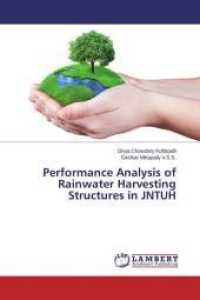Full Description
This book focuses on the fields of neural networks, swarm optimization algorithms, clustering and fuzzy logic. This book describes a hybrid method with three different techniques of intelligence computation: neural networks, optimization algorithms and fuzzy logic. Within the neural network techniques, competitive neural networks (CNNs) are used, for the optimization algorithms technique, we used the fireworks algorithm (FWA), and in the area of fuzzy logic, the Type-1 Fuzzy Inference Systems (T1FIS) and the Interval Type-2 Fuzzy Inference Systems (IT2FIS) were used, with their variants of Mamdani and Sugeno type, respectively. FWA was adapted for data clustering with the goal to help of competitive neural network to find the optimal number of neurons. It is important to mention that two variants were applied to the FWA: dynamically adjust of parameters with Type-1 Fuzzy Logic (FFWA) as the first one and Interval Type-2 (F2FWA) as the second one. Subsequently, based on the outputs of the CNN and with the goal of classification data, we designed Type-1 and Interval Type-2 Fuzzy Inference Systems of Mamdani and Sugeno type. This book is intended to be a reference for scientists and engineers interested in applying a different metaheuristic or an artificial neural network in order to solve optimization and applied fuzzy logic techniques for solving problems in clustering and classification data. This book is also used as a reference for graduate courses like the following: soft computing, swarm optimization algorithms, clustering data, fuzzy classify and similar ones. We consider that this book can also be used to get novel ideas for new lines of research, new techniques of optimization or to continue the lines of the research proposed by the authors of the book.







